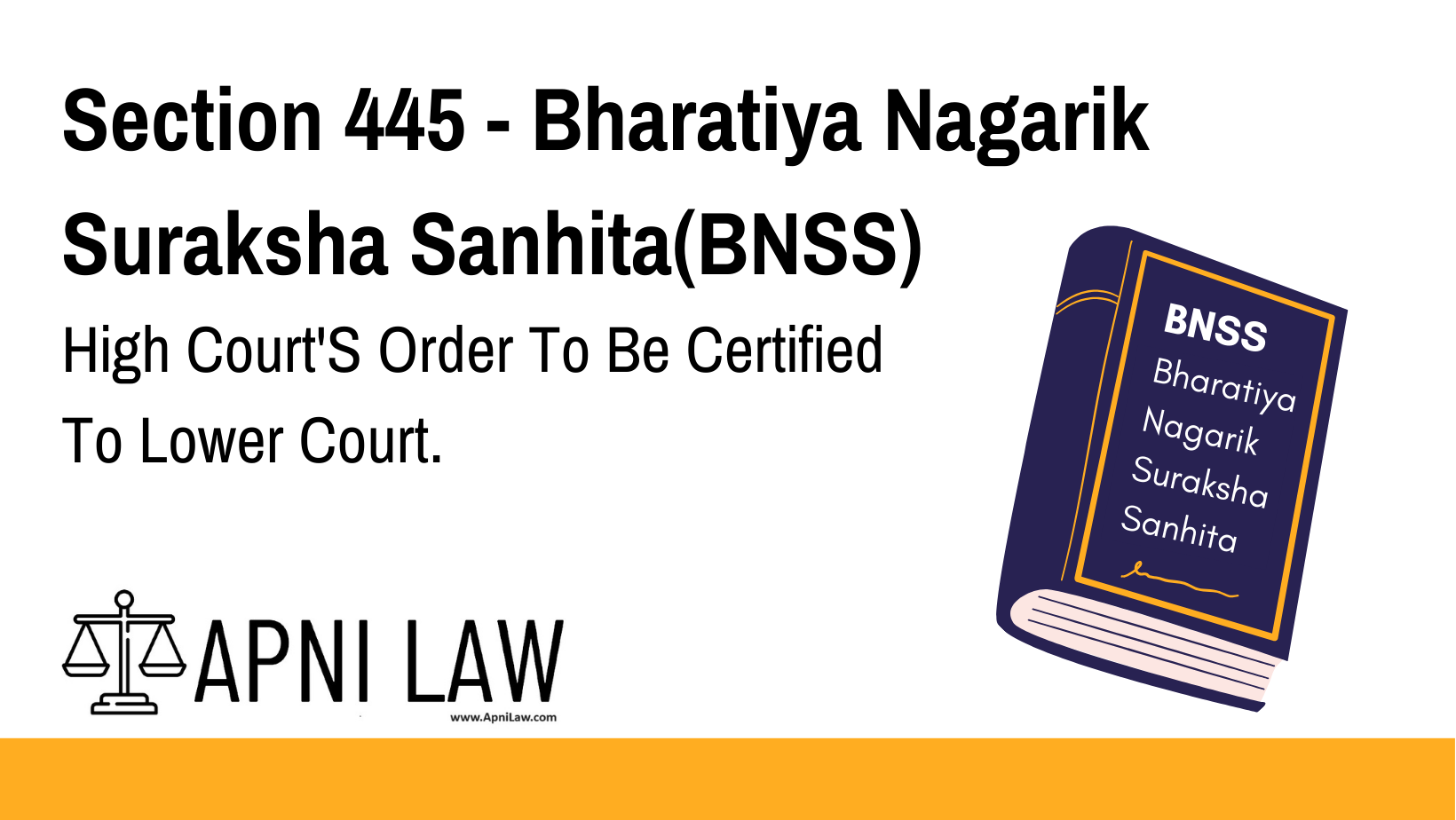Code
When a case is revised under this Chapter by the High Court or a Sessions Judge, it or he shall, in the manner provided by section 429, certify its decision or order to the Court by which the finding, sentence or order revised was recorded or passed, and the Court to which the decision or order is so certified shall thereupon make such orders as are conformable to the decision so certified, and, if necessary, the record shall be amended in accordance therewith.
Explanation of Section 445 BNSS
Key Provisions and Their Purpose
- Ensuring Implementation of Revised Orders
- If the High Court or Sessions Judge revises a case, their decision must be certified to the lower court that initially handled the case.
- The lower court must follow the revised decision and modify the record accordingly.
- Reference to Section 429 BNSS
- Section 445 follows the procedure laid out in Section 429 BNSS, which deals with how appellate orders are communicated to lower courts.
- The goal is to maintain consistency and legal uniformity in implementing revised judgments.
- Binding Nature of the Certified Order
- The lower court cannot disregard or modify the decision of the High Court or Sessions Judge.
- It must make all necessary changes to the records and ensure compliance with the certified order.
Illustration: How Section 445 BNSS Works
Example 1: High Court Revises a Sentence
- A Sessions Court convicts X and sentences him to 5 years of imprisonment.
- X files a revision before the High Court, arguing that his sentence is excessive.
- The High Court reduces the sentence to 3 years and certifies this decision to the Sessions Court.
- The Sessions Court amends its records and ensures that X serves only 3 years.
Example 2: Sessions Judge Revises a Trial Court’s Order
- A Magistrate fines Y ₹10,000 in a criminal case.
- Y files a revision petition before the Sessions Judge, claiming the fine is too high.
- The Sessions Judge reduces the fine to ₹5,000 and certifies the order to the Magistrate.
- The Magistrate modifies the penalty in the official records and ensures compliance.
Common Questions and Answers on Section 445 BNSS
1. Why does the High Court or Sessions Judge need to certify its decision?
To ensure that lower courts implement revised orders properly, preventing legal confusion or contradictory judgments.
2. Can the lower court refuse to follow the certified order?
No. The lower court must comply with the certified order and amend records accordingly.
3. What happens if the lower court does not implement the certified order?
Failure to comply with a certified High Court or Sessions Judge’s decision may result in legal consequences, including possible contempt of court proceedings.
4. Does Section 445 BNSS apply to both criminal and civil cases?
Section 445 applies specifically to criminal cases where revisions are made by the High Court or Sessions Judge under BNSS.
5. Is there a time limit for the lower court to implement the certified order?
While the BNSS does not specify a time limit, courts are expected to act promptly and ensure timely compliance with revised orders.
Conclusion
Section 445 BNSS ensures that revised orders from higher courts are effectively implemented by lower courts. It upholds judicial consistency and ensures that corrections in sentences or findings are properly reflected in legal records.
For more legal insights, visit ApniLaw! 🚀











